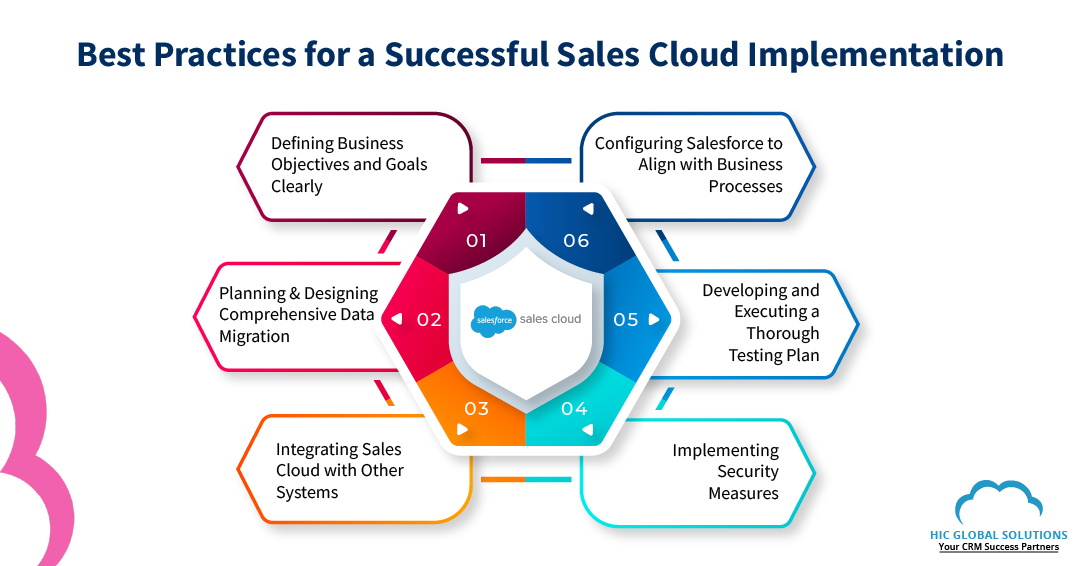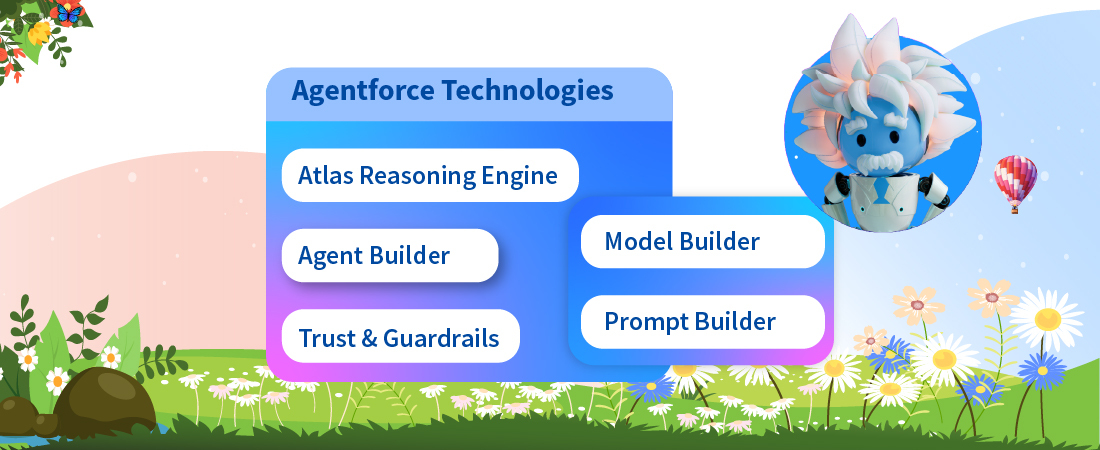Salesforce Sales Cloud offers rich features and products that help sales reps build deeper customer relationships by winning more deals. But sales teams often struggle to derive the best out of the platform that can amp their sales revenue.
So the question is, how do you get the most out of your Sales Cloud implementation?
How do you ensure that your system is aligned with your business objectives and processes and that your data is accurate and secure? How do you train your users and measure your success?
Hence, in this blog today, we have put together our tried and tested Sales Cloud implementation practices that ensure the best result out of your Sales Cloud. Read on to know them!
Our Proven Best Practices for a Successful Sales Cloud Implementation
- Defining Business Objectives and Goals Clearly
To align your Sales Cloud implementation with your vision, it’s crucial to define your business objectives and goals upfront. Identify key performance indicators (KPIs), target audience, market segments, sales strategies, and customer journeys. This clarity will help prioritize requirements and customize the system accordingly.
- Planning and Designing Comprehensive Data Migration
Data is the lifeblood of your sales organization, so ensure a smooth transition by planning and designing a comprehensive data migration strategy.
Cleanse existing data, map fields to Sales Cloud, backup data before migration, and perform thorough testing to ensure accuracy, completeness, consistency, and security.
- Configuring Salesforce to Align with Business Processes
Use tools like Salesforce Setup, Lightning App Builder, and Flow Builder to configure the platform to reflect your unique business processes. Adapt as you grow, adding new features to keep your system optimized for success.
For example, You can create a flow that collects customer information from a web form and creates a lead record in Salesforce and another flow that sends an email alert to a manager when a sales rep closes a deal above a certain amount leveraging the Sales Cloud tools.
- Developing and Executing a Thorough Testing Plan
Testing is critical to ensure your Sales Cloud implementation functions as intended. Define clear testing objectives, choose appropriate testing methods (such as unit testing and UAT), prepare test cases and scenarios, execute tests, record results, and address any feedback or suggestions while reporting and resolving bugs.

- Integrating Sales Cloud with Other Systems
Streamline your sales process and enhance customer experience by integrating Sales Cloud with other systems, such as marketing automation tools or accounting software. This integration enables data synchronization, process automation, and insightful analysis for better decision-making.
- Implementing Security Measures
Protect your data and comply with security requirements by utilizing Salesforce’s security features. Use profiles, permission sets, roles, and sharing rules to control data access. Employ encryption, masking, and auditing to safeguard sensitive information.
Wrap Up
Sales Cloud implementation is a perpetual journey and is no child’s play. Optimizing Sales cloud implementation is best done with expert guidance. From best practices and strategic consultations to training and support, HIC Global Solutions assist businesses every step of the way. To know more about our Sales Cloud implementation services, call now!!






